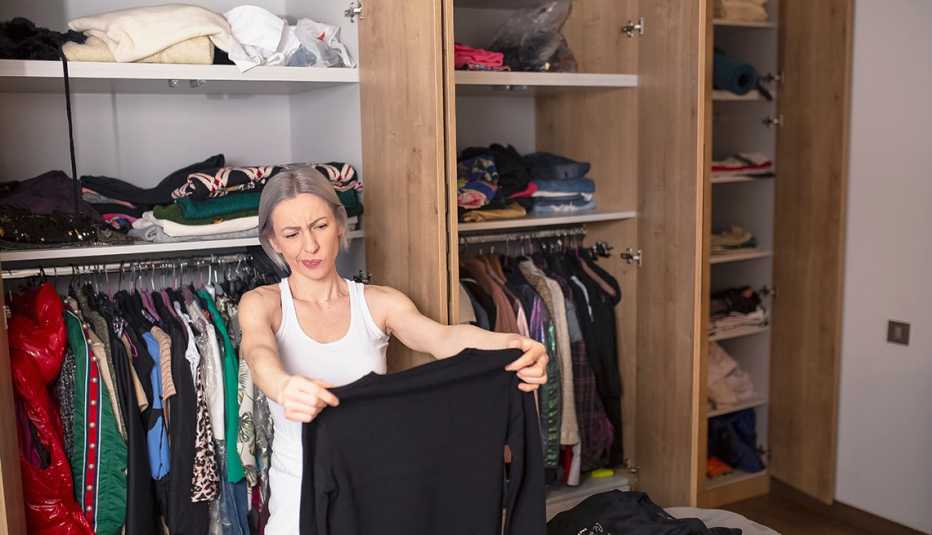Staying Fit


We love to think about decluttering and organizing, but we don’t always love to do it.
People watch The Home Edit on Netflix to see pantries and bookshelves organized in a rainbow of colors and messy garages and bedrooms transformed. They look to Marie Kondo to organize their closets and drawers by tossing items that don’t spark joy.


AARP Membership— $12 for your first year when you sign up for Automatic Renewal
Get instant access to members-only products and hundreds of discounts, a free second membership, and a subscription to AARP the Magazine.
Decluttering in real life , however, often feels overwhelming - like there’s no time to go through the mugs, memorabilia , furniture , books, papers and accessories that find a way to pile up in our homes.
But the reality is that a few small steps can help jump-start the effort and make it feel more manageable - and the end result may even improve your mental health just as much as your home.
Simple Ways to Declutter Your Spaces
- Start by removing trash.
- Begin by choosing one small area to organize — like a drawer.
- Sort items into three piles: Keep, donate and toss.
- Find a specific home for everything you intend to keep — for example, a hook for your keys.
- Group similar items together, instead of storing them in multiple places, so you always know where to find them.
- If you buy something new, pledge to get rid of something else to limit items in your home.
- If you’re holding on to items to pass to the next generation, ask your heirs if they want the items. Be prepared for them to say no, and be gracious.
- Don’t try to do everything all at once. Schedule limited amounts of time to work on decluttering and organizing on a regular basis.
Start small and make piles
“I always suggest starting with removing the trash first,” says Nikki Bell, a professional organizer in Houston. “Grab a trash bag and just walk through the space throwing away anything broken, damaged or actual trash.”
Cardboard boxes can take up a lot of space, so removing them changes the way you view a room, Bell says. After that, pick one small area to tackle, like a drawer, in order to ease yourself into the work.
To start her decluttering project, Sabrina Hamilton, 55, of Colorado, picks one room, assesses the clutter, and starts sorting, using a system many professional organizers follow.
“I create three piles: what I’ll keep, what I’ll donate and what I’ll throw away,” she says. “With each item I’m considering, I decide if it’s meaningful, useful or useless.” Meaningful items get to stay, useful items that she no longer wants are passed along, and useless stuff goes in the trash.
From there, Andrew Mellen, a professional organizer in New York City, encourages people to start organizing. He suggests following what he calls his “organizational triangle” — “one home for everything; like with like; and something in, something out.”

































































More From AARP
8 Tips for Decluttering Before a Big Move
Downsizing often means there’s no room for all that stuff9 Closet Hacks to Organize Your Space
Simple steps to declutter and make sense of your clothes and shoes
13 Things to Throw Away Right Now
A trend toward minimalism means only keeping items that add value to your life
Recommended for You